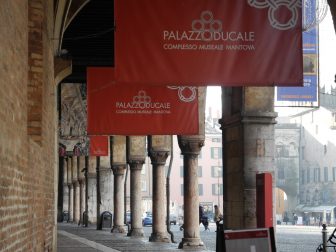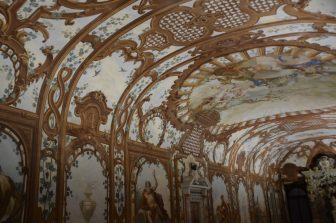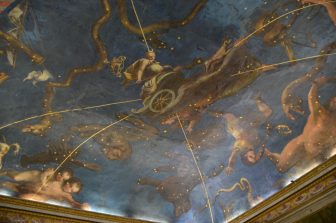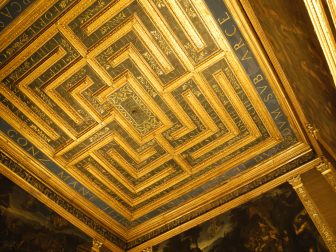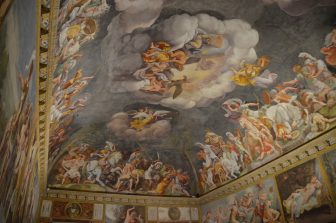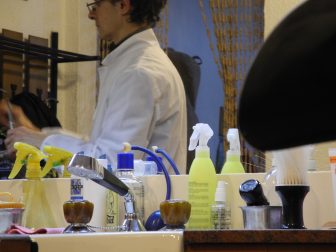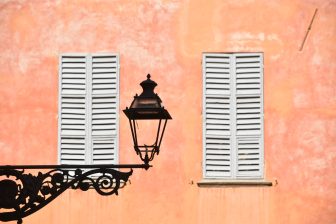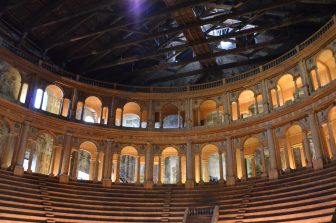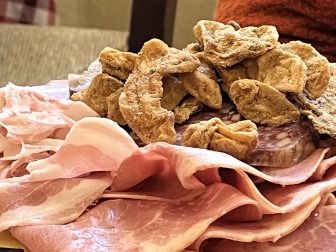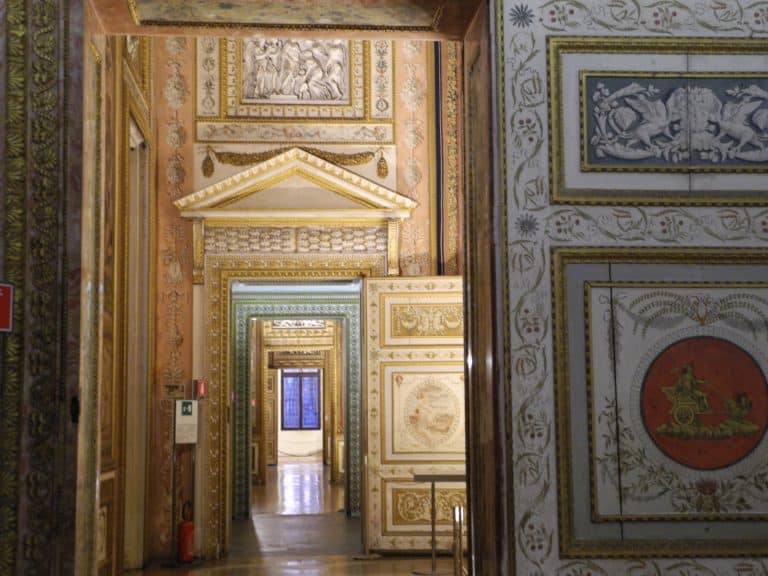
[ Dec.2018 ] After enjoying a good lunch in Mantua, the World Heritage town in the north of Italy, we visited the Palazzo Ducale itself.
This palace was where the powerful aristocratic Gonzaga family lived from the late 13th century to the early 18th century.
The oldest part used to belong to the Bonacolsi family, the people who held power before Gonzaga.
As soon as the Gonzaga family got the power, they started restructuring the old Bonacolsi houses and gradually unified them with the houses of their own.
Apparently, from the start, the Gonzagas were planning to take not only the invisible power, but also the physical space of the city, so expanding the palace was their important project.
Especially after being officially appointed as the Marquess of Mantua, the expansion of the palace was sped up.
That is why this palace is a complex of many buildings and it is called “a city within the city”.
The total number of rooms is more than 500.
Amazingly, after the Gonzaga family ceased, the palace was abandoned and it was completely ruined at the beginning of the 1900s.
The restoration work is still going on and some of the buildings are still semi-abandoned.
So this palace is like a maze and although we got a map, I did not understand where and in what order we walked.
All of the rooms we saw were gorgeous, but some were more impressive than the others and the one of the rooms I remember is Salone dei Fiumi (Hall of Rivers).
The shape of the room was semi-cylindrical and the decorations were particular, with grottoes at both ends.
It was originally made in 1575 and the grottoes were added at the end of the 17th century and the decorations were beautified around 1780.
Another noticeable place was Sala dello Zodiaco (Room of Zodiac).
Its painting on the ceiling, named “Night”, was lovely and it was done in 1570.
Sala del Labirinto (Room of Labyrinth) has a wooden ceiling with the pattern of a labyrinth.
Within the writing on the ceiling, there is one sentence, ‘Forse che si, forse che no (Maybe yes, maybe no).
Apparently, Gabriele D’Annuzio, the famous poet and writer in the early 20th century, wrote a novel whose title is this sentence and Mantua is one of the main settings in the novel.
There is also Sala di Troia (Room of Troy), whose walls and the ceiling were full of frescoes in the theme of Trojan War by Homer.
Apparently, the Gonzaga family were proud of their connection with Greece, since the daughter of a prominent Byzantine family married one of the dukes in 1531.
We visited many more rooms, too many to digest them all.
I nearly forgot but there was a room exhibiting the paintings of Rubens and van Dyke, but I am not sure it was a permanent exhibition or not.
When we got out from this dream world, it was already dark.
The last thing we did in Mantua was go to the barber shop in front of the palace and my husband had his hair cut.
The barber here was an experienced professional with self-assertion.

